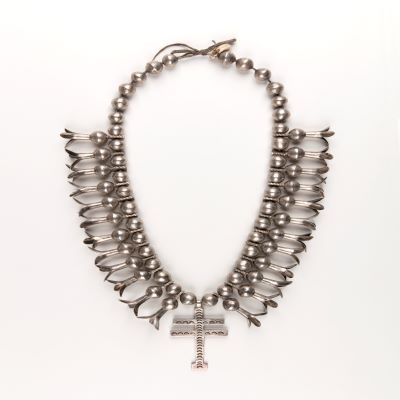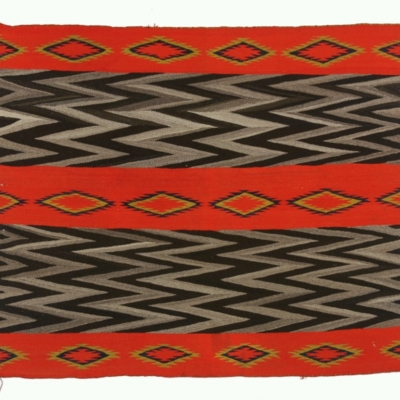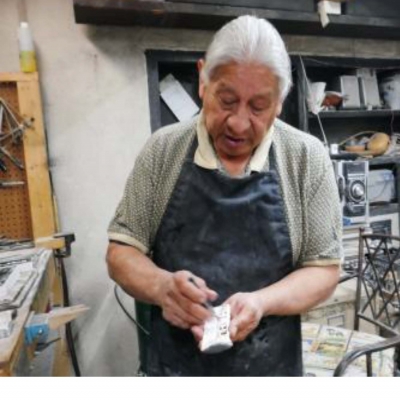Past Exhibitions
Oblique Views: Archaeology, Photography, and Time
October 25, 2015 through May 7, 2017
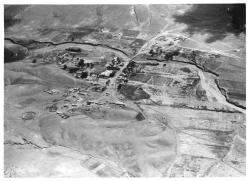
Galisteo
The village of Galisteo, south of Santa Fe, was established sometime between 1790 and 1816. Prior to the Pueblo Revolt of 1680, perhaps as many as fifteen thousand people lived in a number of very large pueblos in the Galisteo Basin. When the Spanish returned in 1692, the Pueblo Indians left basin communities and joined other pueblos, mostly along the Rio Grande. Sustained colonial use of the basin, beyond the early missions at the pueblos, started in the late 1700s with livestock grazing and the establishment of a military outpost. By 1929 Galisteo Creek was being used to irrigate farmed fields, some of which were laid out in the Spanish fashion in long narrow strips. Two fenced cemeteries can be seen to the left, and the road encircles the church in the center of the photograph—a building that was probably also the center of the village. Photograph by Charles A. and Anne Morrow Lindbergh, 1929.
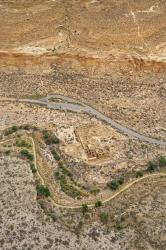
Pueblo del Arroyo
In the years since the Lindberghs took their photograph of Pueblo del Arroyo, Chaco Wash has been channelized and the arroyo banks have been rebuilt around the tri-walled structure. Most but not all of the pueblo rooms excavated by Judd are still open; some have been backfilled to add stability to the structure. Most of the historic features visible in the Lindbergh photograph have been removed by the National Park Service, although Chaco Canyon Cemetery, burial place of Richard and Marietta Wetherill and present but largely invisible in 1929, can easily be seen against the canyon wall. The park service has added a paved road, a parking lot, and trails for visitors touring the site. Controlling the wash and the removal of grazing stock animals have allowed the vegetation in the canyon to recover. Photograph by Adriel Heisey, 2008.
For the first time in Oblique Views: Archaeology, Photography, and Time, large prints of Heisey’s stunning images will be paired directly with the Lindberghs’. The exhibition opens October 25, 2015 and runs through May 7, 2017 at the Museum of Indian Arts and Culture.
During 2007 and 2008, flying at alarmingly low altitudes and slow speeds, Adriel Heisey leaned out the door of his light plane, and holding his camera with both hands, re-photographed some of the Southwest’s most significant archaeological sites that Charles Lindbergh and his new bride Anne photographed in 1929.
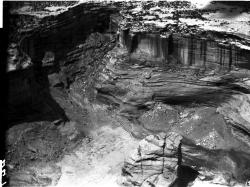
Standing Rock
Standing Rock in Canyon del Muerto. An archaeological site dating between AD 1100 and 1300 is visible on the lower bench of Standing Rock, closest to the viewer. A circular arrangement of plants in a Navajo field, visible to the left of the rock, suggests that it was an orchard or, less likely, that a center-pivot irrigation system was used there. Photograph by Charles A. and Anne Morrow Lindbergh, 1929.

